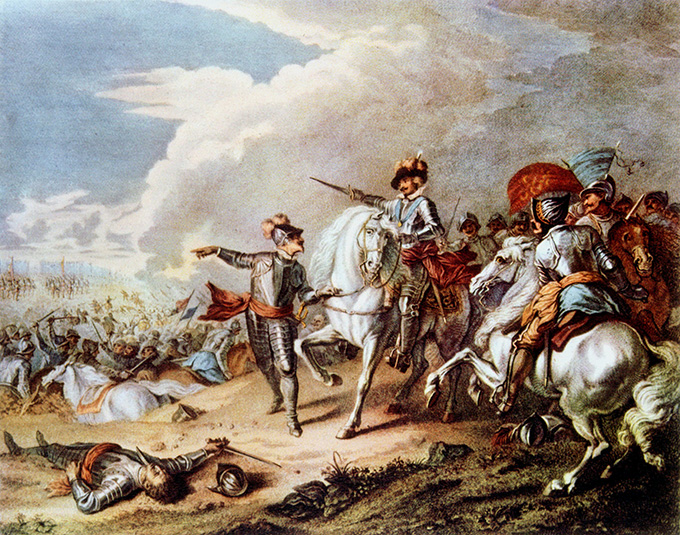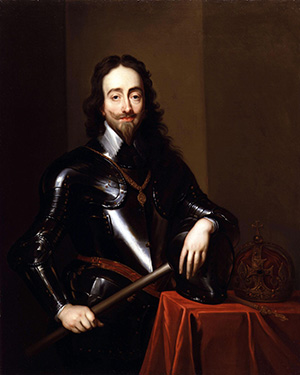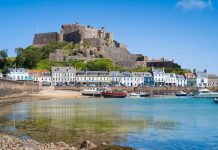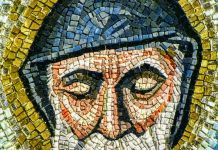
It was one of the most tumultuous periods in British history and culminated in the execution of King Charles I. Our English Civil War timeline charts how Royalists became fiercely pitted against Parliamentarians
Soon after ascending to the English throne, King Charles I became embroiled in a series of arguments with Parliament over his insistence of raising taxes without its authorisation.
Charles also aroused suspicion, particularly among Puritans, over his intentions regarding the Church following his marriage to a Roman Catholic, Henrietta Maria of France.
These issues, along with some other factors, led to a fierce war that raged on English soil for years. Follow our English Civil War timeline, which charts events that led up to the brutal uprising and the aftermath.

1625 King Charles I succeeds his father King James I to the throne.
1629 After Parliament objects to his collection of ‘tonnage and poundage’ taxes, Charles takes the drastic decision to dissolve Parliament, claiming he is accountable only to God.
April-May 1640 The Bishops’ Wars between England and Scotland (the Scots are resisting Charles’s attempts to enforce episcopacy on them) forces Charles to recall Parliament, bringing to an end his Personal Rule. Later known as the ‘Short Parliament’, it is dissolved after just three weeks.
September 1640 Following the disaster of the Short Parliament, Charles is forced to recall Parliament for a second time as only it has the power to raise funds for the ongoing Bishops’ Wars. Known as the Long Parliament, it lasts until 1660, largely because it passes an act forbidding its dissolution without members’ consent.
May 1641 Sir Thomas Wentworth, Earl of Strafford and Lord Lieutenant of Ireland, one of Charles I’s allies, is executed for high treason for urging the king to use Irish forces to launch a military coup against Parliament.
October 1641 An uprising by Catholics in Ireland, which results in the deaths of many English and Scottish Protestant settlers, exacerbates the sense of unease already bubbling away in the country.
22 November 1641 Proposed by John Pym, leader of the Long Parliament, a list of grievances against King Charles I known as the Grand Remonstrance is passed by Parliament.
1 December 1641 The Grand Remonstrance is presented to Charles by Parliament.
4 January 1642 Charles arrives at the Houses of Parliament to arrest Pym and four other rebels. However, realising they have been tipped off and have gone, he laments, “I see the birds have flown.”
1642 Charles sends Henrietta to France to enlist Catholic support and also to try to raise funds by selling the Crown Jewels.
June 1642 Members of the House of Lords and House of Commons issue the Nineteen Propositions – the outline of a new constitution – in a bid to reach a settlement with Charles.
22 August 1642 Charles declares war on Parliament by raising his standard in Nottingham. The country is forced to choose between two camps: Royalists (known as Cavaliers) and Parliamentarians (known as Roundheads).
15 September 1643 Royalists agree a ceasefire with Irish Catholics.
25 September 1643 Parliamentarians form an alliance with the Scots.
February 1645 The New Model Army is established with Oliver Cromwell second in command to Sir Thomas Fairfax.
14 June 1645 Charles’s Royalist forces suffer a humiliating defeat by the New Model Army at the Battle of Naseby.
27 April 1646 A disguised King Charles escapes from Oxford and surrenders himself to Scottish forces at Newark.
17-19 August 1648 The New Model Army, now headed by Oliver Cromwell defeat a Scottish-Royalist Army at Preston.
30 January 1649 King Charles I is executed at Banqueting House in Whitehall, having been tried for high treason in Westminster Hall.
1 January 1651 Charles’s son, Charles II, is crowned King of Scotland at Scone Castle, Perth.
16 December 1653 Oliver Cromwell declares himself Lord Protector.
3 September 1658 Cromwell dies and his son, Richard, becomes Lord Protector. However, the Commonwealth soon collapses and Charles II is asked to return from exile.
29 May 1660 Charles II is restored to the English throne.





 © 2024
© 2024